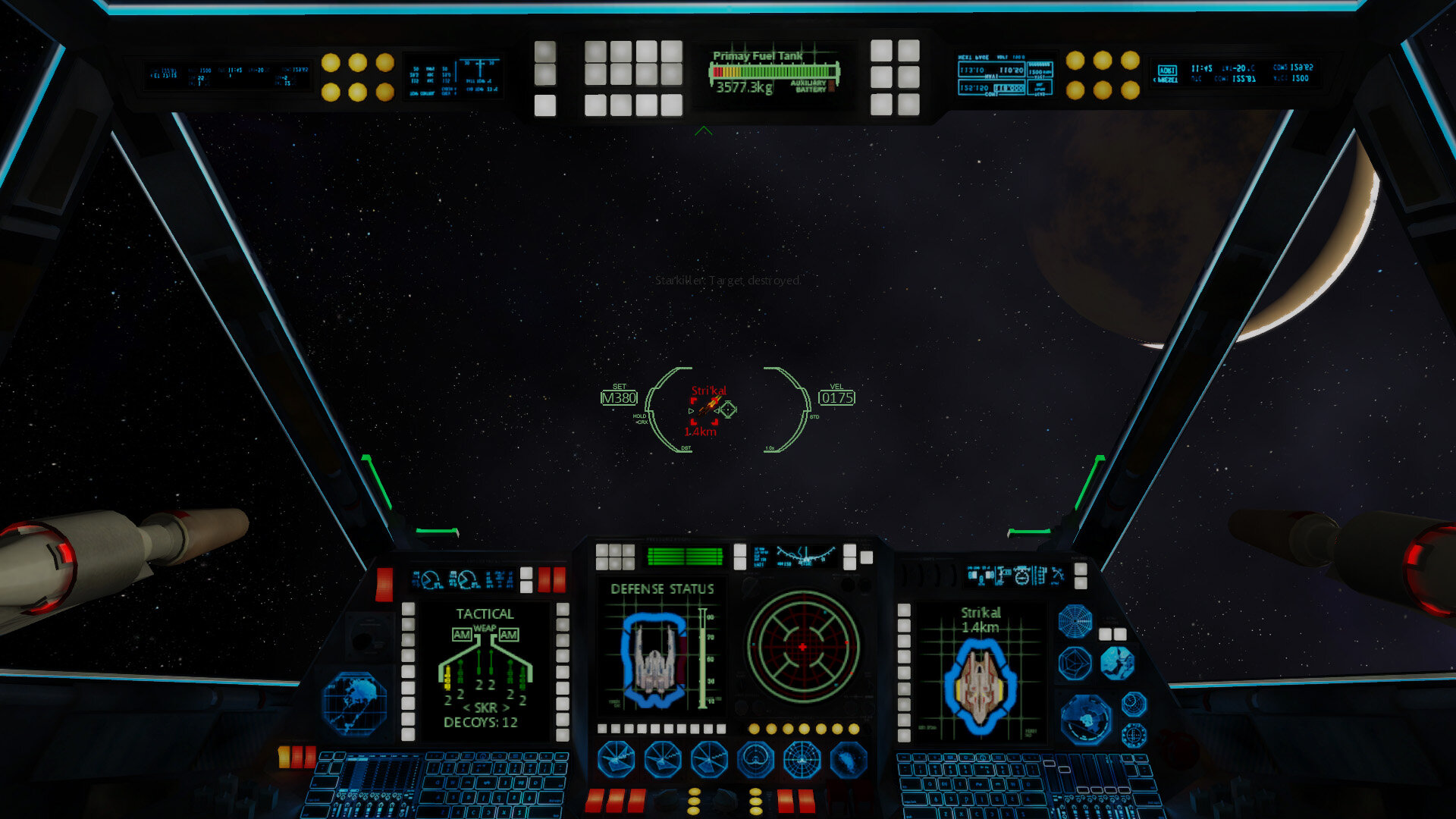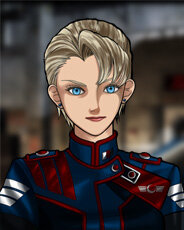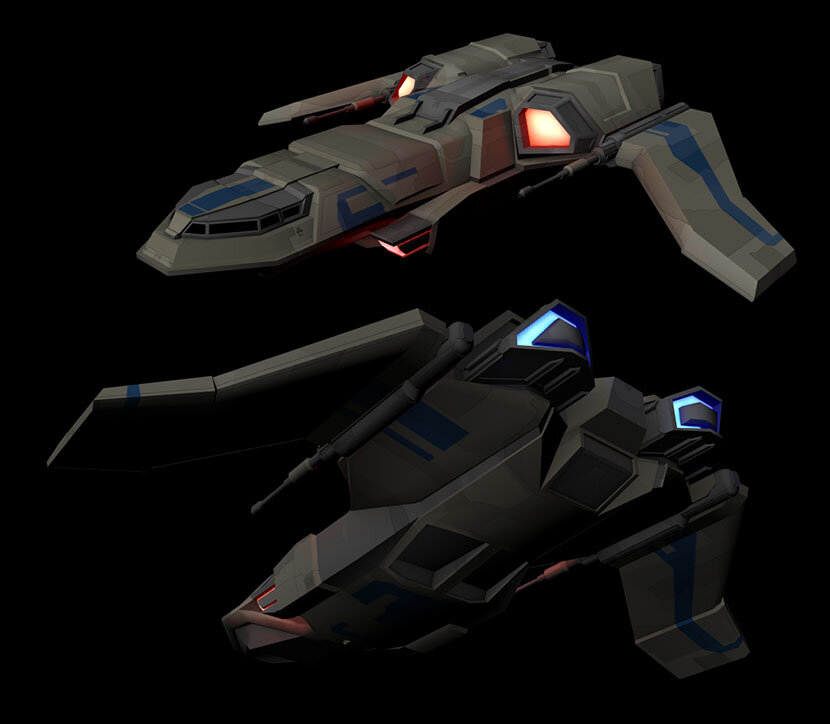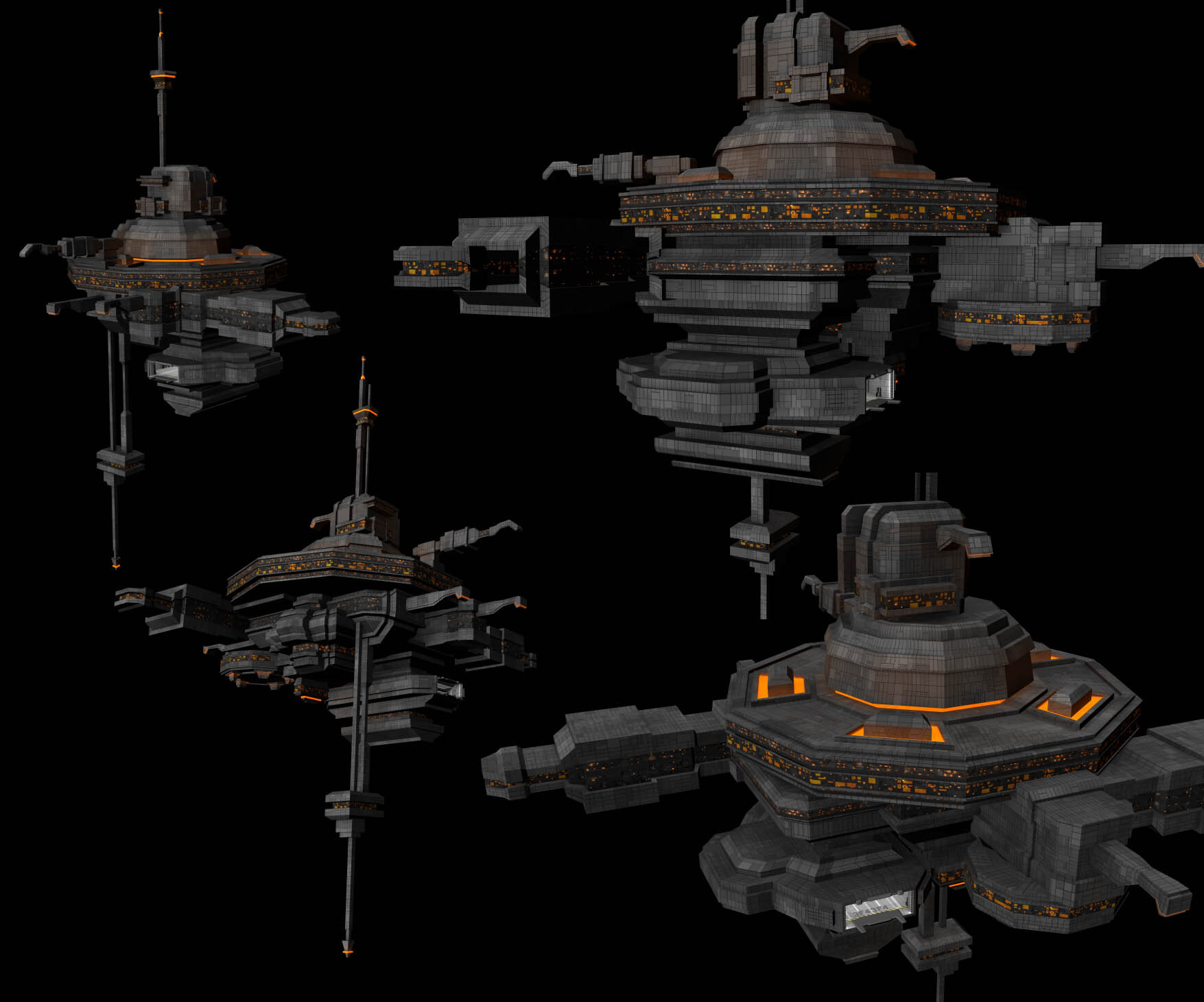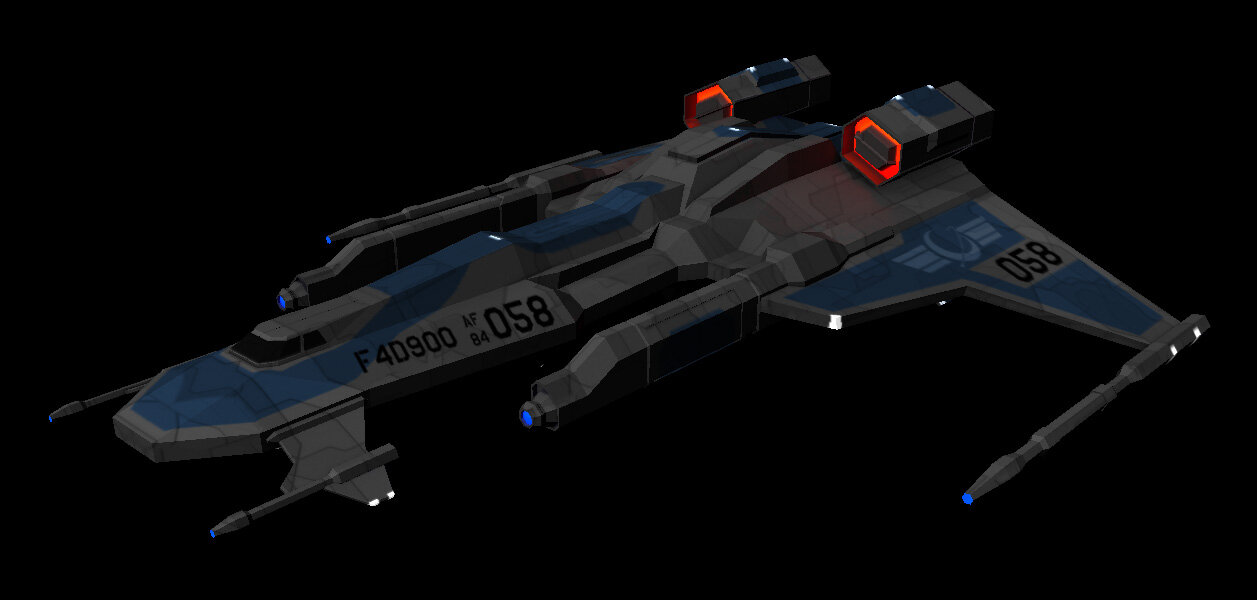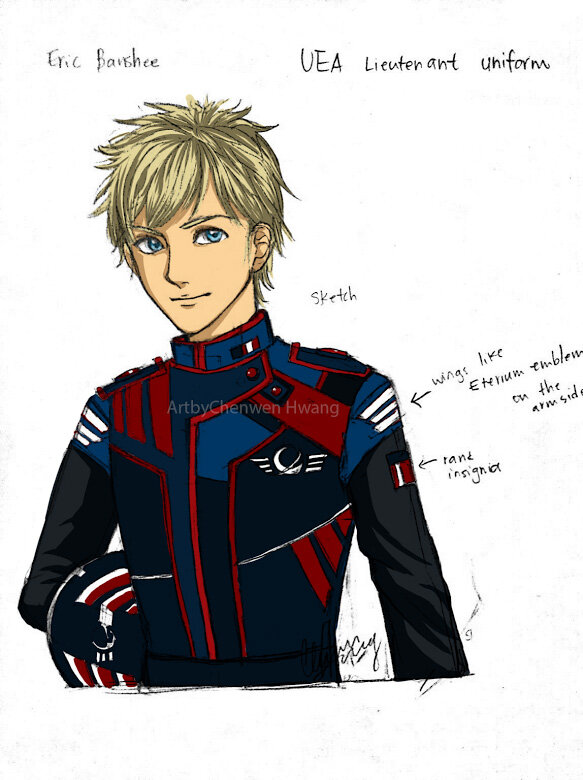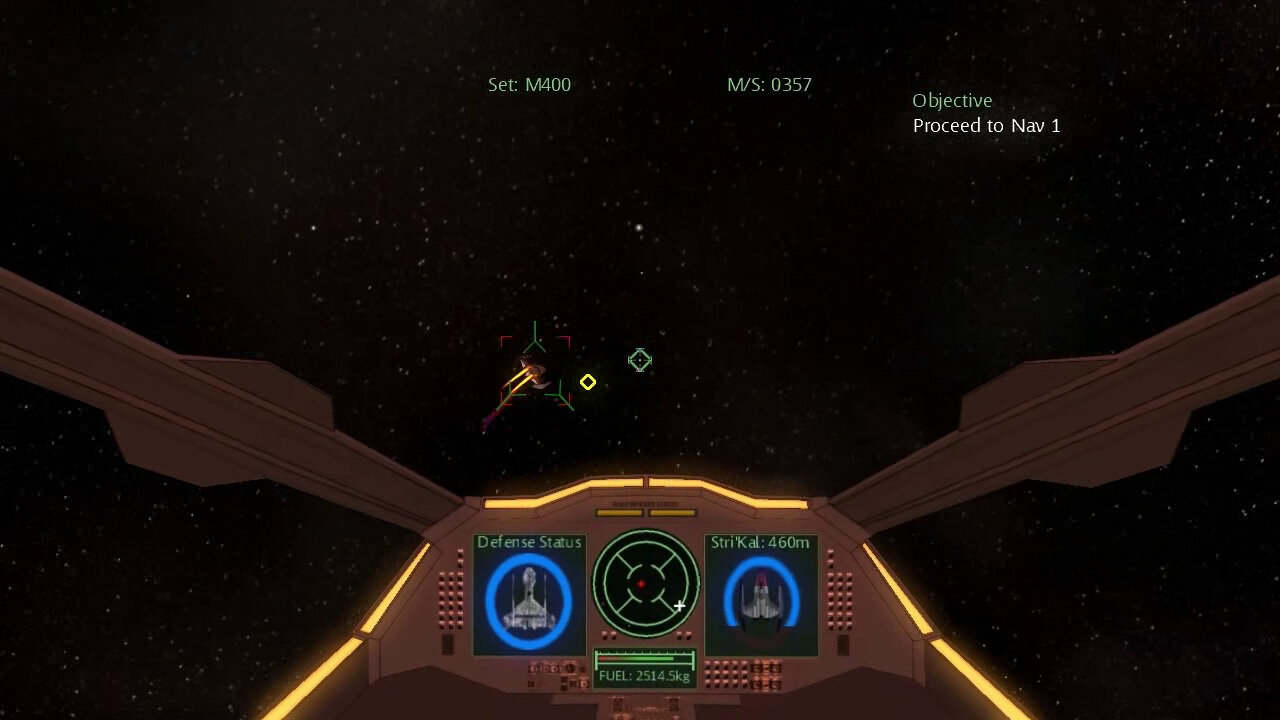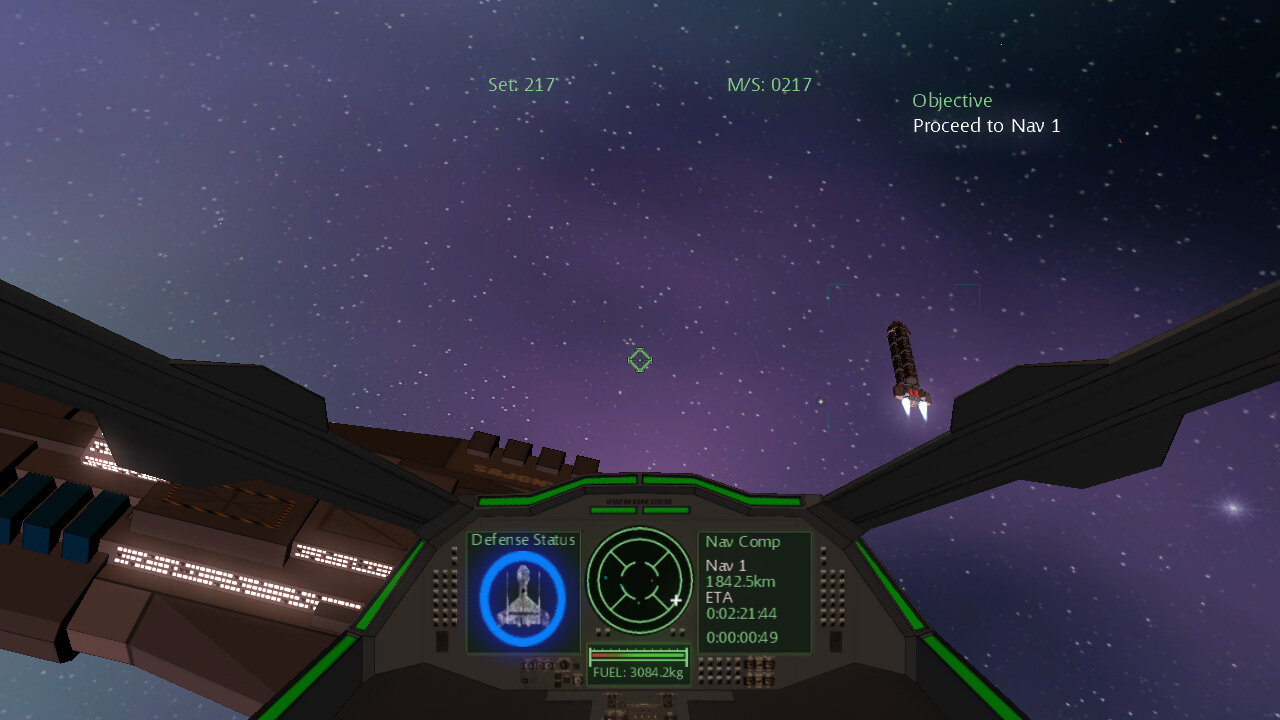
Eterium is a space flight sim in the spirit of 90’s games like Wing Commander and X-Wing. Developed by a three-man team, Eterium aims to bring the classic style of space combat games into the modern era. You play as a pilot serving aboard United Earth Alliance carrier Canopus during a war against a vicious alien race known as the Revi. Experience story-driven gameplay, advanced artificial intelligence, procedural missions and intense 3D space combat as you battle your way through over 50 missions of action-packed gameplay.
Gameplay Features:
Fully customizable joystick
Xbox 360 Controller and Mouse Support
Outstanding stereo 3D support (nVidia 3d Vision only)
Advanced Artificial Intelligence
Dynamic Difficulty
Advanced ship damage system
Fully 3D rendered cockpits
Asteroid and mine fields
Born from a successful Kickstarter, Eterium brings the old-school space combat simulator into the modern era. Serving aboard the United Earth Alliance supercarrier Canopus, you will fly the most advanced starfighters the UEA has to offer against a deadly alien threat.
Developed by a three-man team of industry veterans, what started off as a hobby project became reality upon successful kickstarter funding. Heavily inspired by games like Wing Commander, Freespace and X-Wing, Eterium’s goal is to bring back a simpler space sim game. By foregoing some modern space sim standards such as economy simulations, massive multiplayer and spaceship modifications, Eterium concentrates on the roots of what made spacesim games great: the combat and gameplay. Eterium walks the line between arcade action and complex simulation while boasting tight controls, challenging AI opponents and a damage system that will degrade your ships performance as you absorb damage. Take on the role of Eric “Banshee” Craig, a young pilot in the United Earth Alliance spaceforce and work you way up the killboard as you take on increasingly difficult missions. Battle in asteroid fields, mine fields and even the upper atmosphere of a gas giant as you take on fighters, bombers, destroyers and dreadnaughts.
Panther’s Piloting Tips
By: Major Amy “Panther” Clarkson
The Revi are very capable pilots and fly even more capable craft. The most important thing for all new recruits to remember, is that the Revi are not simulations. They are out there to kill you and not be killed. Do not expect the Revi to make themselves an easy target. The first, and foremost, rookie mistake that I see out there is allowing the Revi to get too far away. While most guns have a range of between 3,000 and 4,000 meters, they are essentially ineffective at that range due to accuracy. Get in behind the enemy and stay close. The Revi will do anything they can to shake you. Some of our estimates indicate that their power plant provides them with virtually unlimited afterburner power and they are not afraid to use it. Staying on the tail of your target will consume a lot of your fuel reserves. You must not be afraid of that. With a proper balance of missiles and well placed shots with your ships guns, you will have plenty of afterburner fuel.
The first approach is another critical element. Do not play chicken with the enemy, you will almost always come out worse. Instead, be patient, wait until the lead enemy ship is within 15,000 or even 10,000 meters before firing your afterburners to engage. Not only does this save fuel, but it gives you more time to evaluate the situation. Once you fire your afterburners to engage, alter your course to one side of the target and attempt to outflank them. Cut your afterburners and let your momentum allow you to drift past your target, while at the same time spinning your ship around. Newer pilots, or those used to atmospheric combat, may find this a little disorienting because you will be flying backwards briefly. Once your target’s back is in your sights, hit the afterburner, get in close and don’t let him go! If during the initial encounter the enemy acquires a missile lock, wait until you can see the missile before going evasive. In this case, the best evasive maneuver, assuming the missile is a Seeker missile, is to drop a decoy once you can see the missile and alter your course slightly. You will not need to fly any drastic evasive maneuvers. Just a slight alteration of your course will reveal the decoy. Once the missile takes the decoy you can continue your outflanking maneuver.
-

S'tra Light Fighter
The S’tra Light Fighter is a pesky little ship. Very fast and very maneuverable, the S’tra can easily evade even the best pilots. It’s key weakness is its lack of strong shielding and armor. Most of the time a single Seeker missile, and usually a single FF missile, will be enough to dispatch this enemy. Don’t be afraid to use your missiles on this target. Many pilots think it is a waste to use missiles on such a weak target. But with missiles these fighters are quick kills, freeing you up to concentrate on heavier targets.
-

Stri'kal Medium Fighter
The backbone of the Revi fighter force, the Stri’kal Medium fighter is used both as a bomber and a space superiority fighter. While not as well armed as the UEA equivalent, the Sagaris, the Stri’kal medium fighter can be deadly to capital ships. Faster than most bombers and strong enough to withstand a Seeker missile hit, the Stri’kal can get in fast and deliver its payload. Due to its inferior maneuverability compared to the S’tra, the Stri’kal does not pose much of a threat in fighter to fighter combat. Use your guns to take down its shields and either finish it off with your guns or let loose with a missile.
-

Gril'kath Medium Fighter
One of the deadliest fighters in the Revi arsenal, the Gril’kath is an anti-fighter weapons platform. Under no circumstances should your ever play chicken with this fighter, I don’t care if you’re flying a Changdao heavy fighter, you will suffer severe damage. The most notable physical feature of the Gril’kath are the two primary laser cannons, the mistake that many rookie pilots fall into is failing to realize there are two Tachyon cannons hidden under the fuselage. This fighter was designed solely to take out other fighters and to do it quickly. Most pilots I know prefer to take this out first, unless there are more important targets, such as bombers when you’re flying an escort run.
-

Tri'nal Heavy Fighter
Heavily armed and heavily armored, the Tri’nal fighter is like a cross between the Gril’kath and the Stri’kal. Usually carrying an assortment of Seeker missiles and dumbfires, the Tri’nal is effective against both fighters and capships. The Tri’nal can be modified to carry torpedoes. The key weakness of this craft is its slow speed and poor maneuverability. Get in behind it and stay there. Never fall into the sights of one of these. Equipped with two Meson blasters and two Tachyon cannons, the Tri’nal is second only to the UEA Changdao heavy fighter in firepower.
On Ace difficulty and higher, the Tri’nal carries FF missiles in addition to its Seeker loadout. FF Missiles are not affected by decoys and are very difficult to evade. On higher difficulties, it is suggested that you take out these Tri’nal as fast as possible.
Asteroid and Minefields
Many pilots panic the first time they encounter an asteroid field. Avoiding all those tumbling rocks can seem like a daunting task. It is important to remember, do not use your guns to attempt to cut a path through the asteroid field. Most fighters do not have the firepower to destroy even the smaller asteroids without requiring several shots. While concentrating on trying to take out a single asteroid, you are far more likely to be hit by an asteroid. There are of course exceptions, the poor maneuverability of the Changdao heavy fighter sometimes puts it in a position where it’s only choice is to blast its way through an asteroid or two. The Changdao’s heavy firepower make this a simple matter.
Your best bet to surviving an asteroid field is to take it slow. Do not use your afterburner. Some Revi fighters like to hide behind bigger asteroids. While this is a very dangerous maneuver, it does afford them the element of surprise. Watch your back at all times in asteroid fields. If it comes to a dogfight among the rocks, don’t let your desire to get a kill distract you from avoiding the asteroids.
If you encounter a minefield, the rules are completely different. Mines have limited tracking ability, so if you travel slowly all the mines will track onto your position. In a minefield the key is to go fast. Short controlled bursts from your afterburners after each course correction will keep the mines tracking ability from being effective. Do not just afterburn through the entire minefield, this is not only a waste of fuel, it is very dangerous. Again, a controlled burst just after each course correction. If you hit one mine, it is likely the blast will knock you into another and then another. While one mine will probably not do much damage, the repeated explosions of the other mines set off by the chain reaction will likely kill you.
Combat in minefields: don’t. If you encounter enemy ships in a minefield, do not engage. It will be bad for everyone involved.
On difficulty settings below Ace, mines do not track.
// Art
Eterium
From a hobby project to release
Character art was one of the more difficult art issues we had. Neither David nor I had sufficient character art skills to create satisfying characters. The first attempt (right) was created by me using Daz Studio. The middle image was a recreation David did attempting and anime style. Finally, we hired Chenwen to create the characters that appear in the game (above).
Preview sketch for final character
Anime character recreation
Original characters created with Daz Studio
Prototype
// Early Concept Art
Before David joined the team, I was developing the game alone. Here are some of my early concept art. You’ll notice how closely David’s concepts followed my originals because he was intent on sticking to my original vision.
// Early Prototype Screenshots
As a programmer, the most difficult part of developing Eterium was the artwork. The early prototype of the game looked much difference than it does today, but played almost the same as the final version. Once David joined the team, our visuals really took off.








